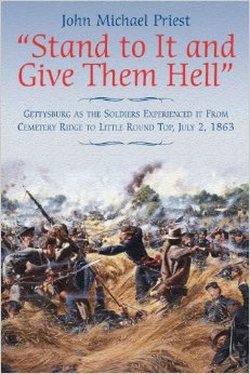
John Michael Priest
Savas Beatie, 2014, 518 pp., $32.95
ISBN: 978-1-61121-176-4
Image courtesy of amazon.com
When I first heard about the premise of Stand To It and Give Them Hell I was intrigued. Throughout all of the works about the Battle of Gettysburg I have read, there are only a select few which rely heavily on the primary sources to tell the story. What John Michael Priest has done in this work has given us the story of the Second Day of Gettysburg from the Round Tops to Cemetery Ridge with over ninety percent of primary sources. Even before I go into the analysis on the book, I can only say good things about this book. Priest has given us something which I hope will become a classic in the years to come.
John Michael Priest is a retired high school history teacher and has always been interested in the American Civil War. He is a graduate from the Loyola College in Baltimore and Hood College in Frederick, Maryland. He has written many works on the Civil War including Into the Fight: Pickett’s Charge at Gettysburg, and Nowhere to Run: The Wilderness, May 4th & 5th, 1864. He has also been considered the “Ernie Pyle” of the Civil War soldier by the legendary Ed Bearrs. Priest is also one of the historical consultants for the upcoming television miniseries To Appomattox.
Stand To It and Give Them Hell lives up to the hype of a narrative of the second day of Gettysburg as seen through the eyes of the soldier. The main characters in the book are the soldiers themselves, but there are some accounts of the commanders as well in order to set up the action which takes place later on the day. The greatest thing which I think Priest does in his work is set up the action by hours instead of by location. There have been many other works in the second day at Gettysburg which have been chronicled by location, but Priest does this by hour. Not only does this help the reader understand the action of the battle and the waves in which Longstreet attacked, but even the set up, which takes the first hundred pages of the text, are well read. Without that background, the reader could be lost in the text without any aid as to the reasons for the attacks. Also, there are a few sources which Priest mentions which may give the reader a different look on the stressed Robert E. Lee. Some of the stories throughout the action are heartbreaking as to the sacrifice which these soldiers made on the fields of Gettysburg. Some of these stories even make the reader proud to be American given the sacrifices made for the freedom of the country.
I cannot recommend this book enough, highly highly recommended. There was a lot of hype behind this work in the realm of Civil War academia, and it is well deserved. This is a work which delivers time and time again only making the reader want more and more. When the end of the book comes, the stories of the soldier are inspiring. Thank you, John Michael Priests, for bringing us this work on the Battle of Gettysburg. Highly Recommended.
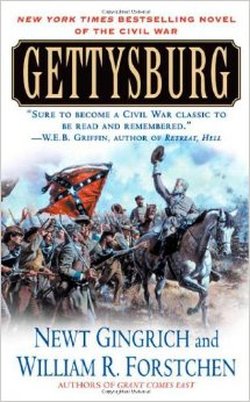

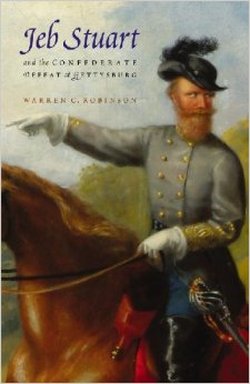
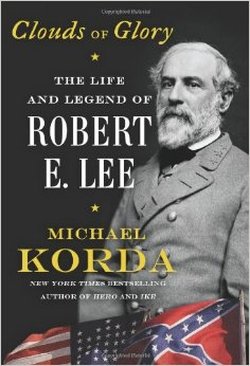
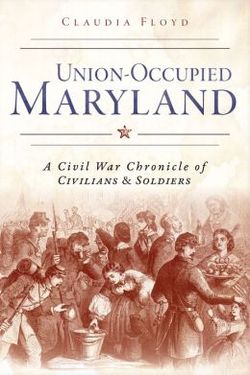
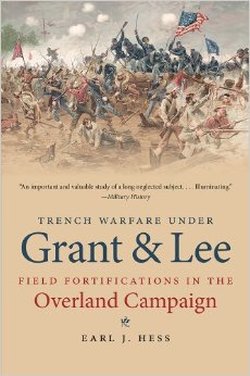
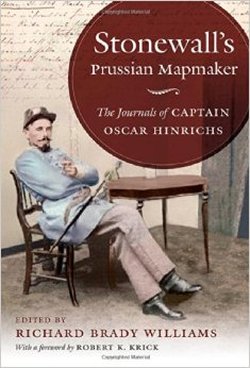
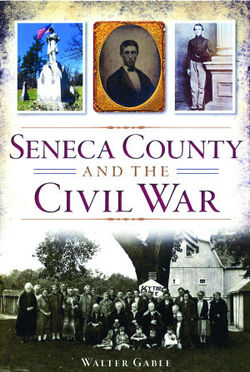
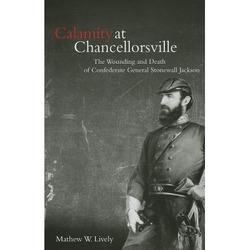
 RSS Feed
RSS Feed
